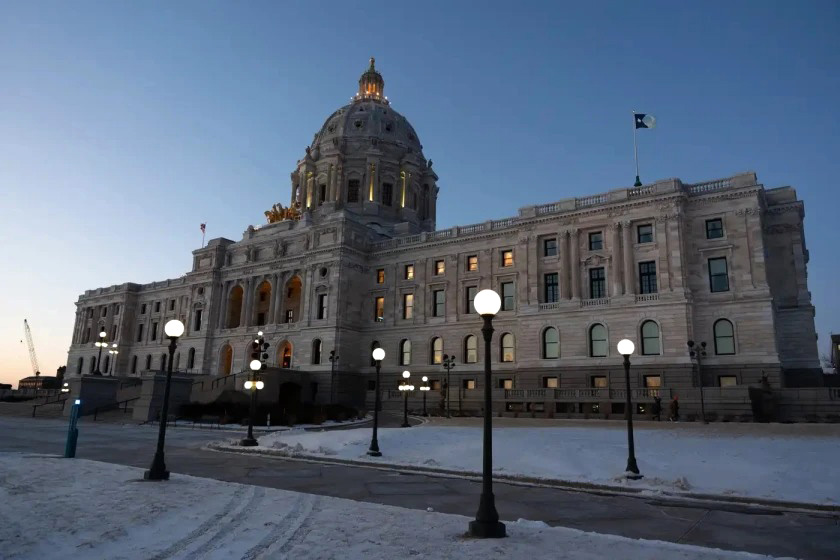As usual, local governments, state agencies and public universities are pushing for the Minnesota Legislature to pass a big borrowing bill to fund infrastructure and maintenance projects this year.
Will they get their wish? If recent history is any indication, they shouldn’t expect an all-encompassing bill.
Bonding has been a key part of partisan negotiations in the last few years at the Minnesota Capitol, where minority Republicans used the 60% threshold for borrowing bills to push for concessions from the Democratic-Farmer-Labor majorities.
When lawmakers passed the last $2.6 billion capital investment package in 2023, it was possible because DFLers agreed to give Republicans $300 million for struggling nursing homes.
The next year, a nearly $1 billion proposal failed. Republicans refused to approve a bonding proposal when DFLers tried to advance a bill that would create a path for abortion rights in the state Constitution. The session ended in chaos.
This year
This year could be different. Republicans now have a 67-67 tie with the DFL in the House, giving them a little more bargaining power. There was optimism about a bonding deal after a meeting between Gov. Tim Walz and key leaders of both parties in the House and Senate on April 10.
Gov. Tim Walz. (Jose. F. Moreno / The Philadelphia Inquirer/TNS)
“What I heard from everybody in that room is a desire to proceed and hopefully that won’t get wound up in the politics of this place and that we keep our eyes and our focus on what the people of Minnesota need,” said Senate Majority Leader Erin Murphy, DFL-St. Paul. “When we tie other politics to a bonding bill — that is the way you see it end.”
Sen. Erin P. Murphy. (Courtesy of the Minnesota Senate)
Complete bonding bills aren’t likely to emerge until the Legislature resumes business after Easter, but the governor and legislative leaders already have targets. They’ll be smaller than past years as the state has a significantly smaller budget surplus for the next two years and a $6 billion deficit projected for the 2028-29 biennium.
Walz has proposed a plan to borrow $700 million — what budget officials expect the state can take on in the next year — plus spending $10 million from the general fund and $97 million from the Trunk Highway Fund.
All the highway funds in his pitch will cover a new $97 million Minnesota State Patrol Headquarters building. Another $69 million will go to the construction of a Minnesota Bureau of Criminal Apprehension Office and Laboratory in Mankato.
Other projects
Other major projects include:
• $85 million for asset preservation at the University of Minnesota system’s campuses.
• $99 million for water treatment.
• $50 million for Department of Natural Resources repairs and maintenance.
• $80 million for Minnesota State Colleges and Universities.
Senate and House leaders have an idea of how much they want to borrow, but haven’t released anything as specific as the governor has.
DFL and Republican House leaders have not formally released targets but have signaled their bonding bill will adhere to the $700 million one-year borrowing limit set by state forecasters at the Department of Management and Budget.
Senate DFLers say they want to pass a bonding bill of $1.35 billion this year but haven’t released specifics yet, either.
Sen. Sandy Pappas (Courtesy photo)
Project requests
Either way, there will be a narrow group of projects approved this year. There are billions of dollars in requests in any year, and only some are granted.
From St. Paul, there are bills with requests from the Como Zoo, Jimmy Lee Recreation Center, CHS Field and the Ordway Center, just to name a few. The city of Hastings is seeking state money to help address contamination of its city water supply with so-called forever chemicals.
Another request — for state funds to cover half of the $769 million renovation of downtown St. Paul’s Xcel Energy Center — likely won’t be included in the bonding bill. If the state approved such a large project, it likely will be in a separate specific appropriation bond, bonding committee leaders said.
State Sen. Sandy Pappas, a St. Paul DFLer who chairs the Senate Capital Investment Committee, told Minnesota Public Radio that general obligation bonds wouldn’t be what cover a project like that, and that it was too soon to renovate the arena, which opened nearly 25 years ago.
Rep. Lisa Demuth. (John Autey / Pioneer Press).
However, despite debt constraints and what appears for now to be a big gap between the House and Senate positions on bonding, the Xcel request may not be dead yet.
“Nothing’s actually ruled out at this point,” said House Majority Lisa Demuth, R-Cold Spring, when asked about the project at an April 10 negotiation meeting.
Related Articles
Senate president faces scrutiny, MN lawmakers say ethics rules need a look
Joe Soucheray: Cutting the pittance set aside for private schools? Typical
Letters: Seasons rule. We need permanent standard time, not DST
Private schools face cuts under Gov. Tim Walz’s proposed budget
Republicans will vie in Senate primary that followed Eichorn’s sex sting arrest


Leave a Reply